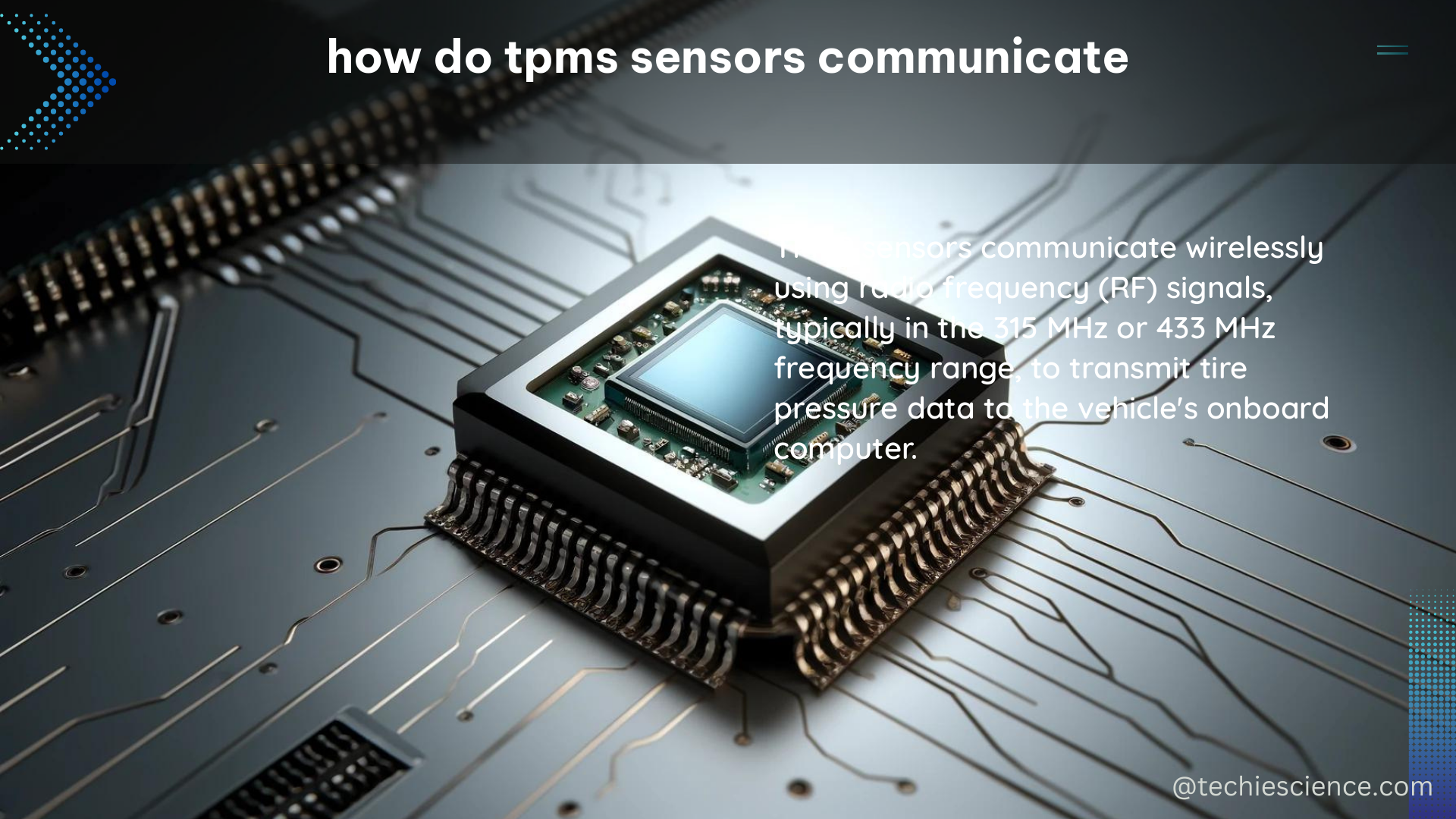TPMS (Tire Pressure Monitoring Systems) sensors are an essential component of modern vehicles, providing real-time information about the air pressure in each tire. These sensors communicate using wireless technology, typically via radio frequency (RF) signals, to transmit data to the vehicle’s receiver unit. In this comprehensive guide, we’ll delve into the technical details of how TPMS sensors communicate, their communication protocols, and the DIY aspects of testing and replacing these sensors.
TPMS Communication Protocols
The communication protocol used by TPMS sensors is standardized and follows two main standards:
-
ISO 14230-4 (Keyword Protocol 2000 or KWP2000): This standard defines the communication parameters, message formats, and data rates used by TPMS sensors. It specifies a data rate of 10.4 kbps and a frequency range of 315 MHz or 433 MHz.
-
SAE J1850 (Vehicle Area Network or VAN): This standard is another widely used protocol for TPMS communication. It defines a data rate of 41.6 kbps and operates at the same frequency range as the KWP2000 standard.
Both of these protocols ensure that TPMS sensors can communicate effectively with the vehicle’s receiver unit, providing consistent and reliable data transmission.
TPMS Sensor Specifications

TPMS sensors are designed to transmit data using low-power radio frequency (RF) signals. Here are the key technical specifications of these sensors:
- Frequency: TPMS sensors typically operate at a frequency of 315 MHz or 433 MHz, depending on the regional regulations and the vehicle’s requirements.
- Data Rate: The data rate for TPMS sensors can be either 10.4 kbps (KWP2000 protocol) or 41.6 kbps (VAN protocol).
- Modulation: TPMS sensors use frequency-shift keying (FSK) modulation to transmit data.
- Transmission Power: The transmission power of TPMS sensors is typically around 1 milliwatt (mW), which is sufficient to provide a communication range of up to 20 meters (66 feet).
- Unique Identifier (ID): Each TPMS sensor has a unique identifier (ID) code that is transmitted along with the tire pressure and temperature data. This allows the vehicle’s receiver unit to differentiate between the various sensors installed on the vehicle.
- Battery Life: TPMS sensors have a battery life of approximately 5-10 years, after which they need to be replaced.
TPMS Communication Range and Reliability
The communication range of TPMS sensors is typically up to 20 meters (66 feet), although this can vary depending on the specific sensor model and environmental conditions. Factors such as the sensor’s placement on the wheel, the presence of metal or other obstructions, and electromagnetic interference can affect the communication range.
To ensure reliable communication, TPMS sensors are designed to transmit data at regular intervals, typically every 60-90 seconds. This redundancy helps to minimize the risk of data loss or interference, providing the vehicle’s receiver unit with consistent and up-to-date information about the tire pressure status.
DIY TPMS Sensor Testing and Replacement
For DIY enthusiasts, TPMS sensors can be tested and replaced using specialized tools and following the manufacturer’s instructions. Here’s a step-by-step guide:
-
TPMS Sensor Tester: A TPMS sensor tester is a specialized tool that can be used to check the battery level and signal strength of the sensors. This tool can also be used to program new sensors with the correct ID code.
-
Sensor Replacement: To replace a TPMS sensor, you’ll need a specialized tool that can program the new sensor with the correct ID code and register it with the vehicle’s receiver unit. These tools are available for purchase or rental at automotive supply stores and online retailers.
-
Sensor Programming: Follow the manufacturer’s instructions to program the new TPMS sensor with the correct ID code. This typically involves using the specialized tool to communicate with the vehicle’s receiver unit and register the new sensor.
-
Sensor Registration: After programming the new sensor, you’ll need to register it with the vehicle’s receiver unit. This process may vary depending on the vehicle make and model, so refer to the manufacturer’s instructions or consult a professional if you’re unsure.
By following these steps, DIY individuals can test and replace TPMS sensors as needed, ensuring their vehicle’s tire pressure monitoring system is functioning correctly.
Conclusion
TPMS sensors are a crucial component of modern vehicles, providing real-time information about tire pressure and temperature. These sensors communicate using wireless RF signals, following standardized protocols such as ISO 14230-4 (KWP2000) and SAE J1850 (VAN). With their technical specifications, communication range, and reliability, TPMS sensors play a vital role in maintaining vehicle safety and fuel efficiency.
For DIY enthusiasts, testing and replacing TPMS sensors can be done using specialized tools and following the manufacturer’s instructions. By understanding the technical details of how TPMS sensors communicate, you can ensure your vehicle’s tire pressure monitoring system is functioning optimally and take proactive steps to maintain its performance.
References:
- Test and Evaluation Management Guide – AcqNotes
- Defense Acquisition Guidebook – DOT&E
- DoD 2022.4 SBIR Annual BAA

The lambdageeks.com Core SME Team is a group of experienced subject matter experts from diverse scientific and technical fields including Physics, Chemistry, Technology,Electronics & Electrical Engineering, Automotive, Mechanical Engineering. Our team collaborates to create high-quality, well-researched articles on a wide range of science and technology topics for the lambdageeks.com website.
All Our Senior SME are having more than 7 Years of experience in the respective fields . They are either Working Industry Professionals or assocaited With different Universities. Refer Our Authors Page to get to know About our Core SMEs.